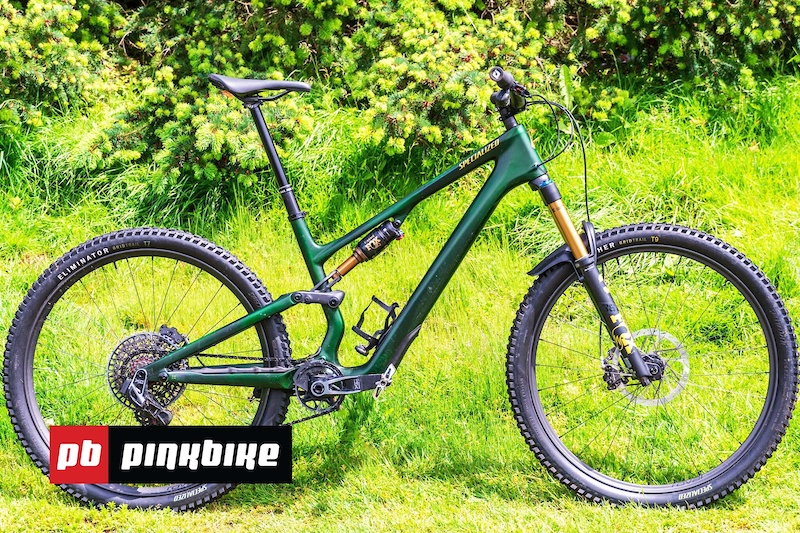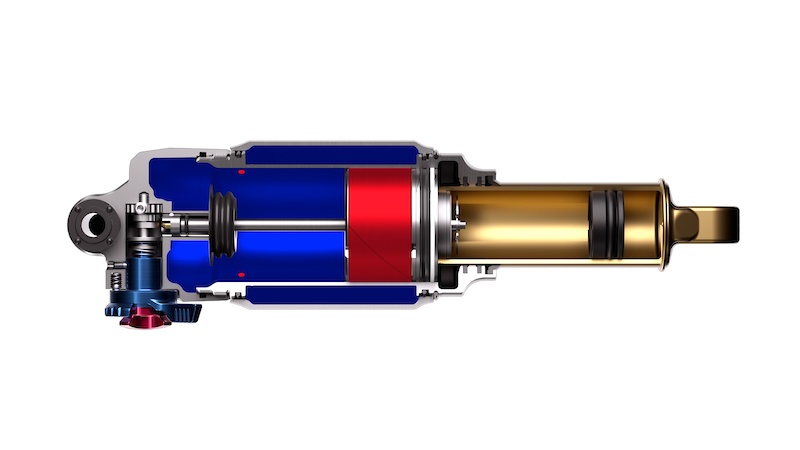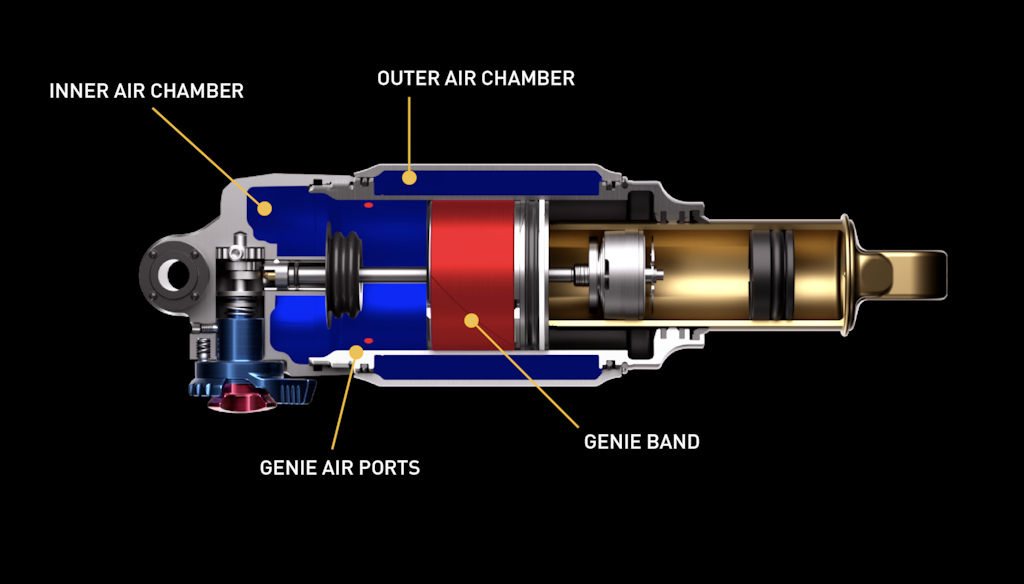Tech
First Ride: The 2025 Specialized Stumpjumper Has a New Dual Chamber Air Shock – Pinkbike

We’ve returned to singular Stump, with 145mm of rear travel across the board, and 150-160mm forks on all builds. The geometry and adjustments are quite similar to that of the outgoing EVO, but small details have changed and evolved. The most major change comes in the form of a revised kinematic, in tandem with a novel shock technology to maximize the benefit.
• 29″ or mixed wheels (S1&S2 mixed only)
• Carbon frame
• 145mm frame travel, 150-160mm fork
• 63-65.5° head angle
• 400-530mm reach
• 430-445mm chainstays
• 77° seat angle
• Wheel size and frame geometry flip chips
• Actual weight: 31.2 lb / 14.2 kg (S5)
• Price: $6,500-12,000 USD
• S-Works Frameset: $3,500 USD
• specialized.com
Frame Features
Things here look fairly similar to the last-generation EVO, with press-in headset cups that allow for ±1° head angle adjustment, a high/low flip chip to change bottom bracket height and headtube/seattube angle, and an aftermarket rocker link that allows you to run a different sized rear wheel. That last element only applies to bikes sized S3 and larger, as the S1 and S2 options are mixed-wheel only.
The Stumpjumper includes SWAT 4.0, Specialized’s most refined in-frame storage solution yet. First seen on the Epic 8, this newest iteration of SWAT eschews any superfluous hardware mounted to the frame, and instead has the door of the hatch interact directly with the carbon of the frame, ensuring a snug fit, long lifespan, and great weather sealing.
One new detail on the Stumpy that’s sure to raise some hackles is the elimination of mechanical drivetrain cable routing – this bike is wireless shifting only. The argument from their development team is that they believe the highest shifting performance available comes from systems like SRAM Transmission, and that the best is what folks deserve on this bike.
The bike uses a 200mm rotor native post rear brake mount, which is a bit surprising considering the fact that nearly all the Stumpjumper’s builds come with SRAM Maven brakes – those can offer plenty of power on a smaller 180mm rotor. That said, running them with 200s front and rear hasn’t ever felt excessive on this bike.
Geometry
Like the outgoing Stumpy EVO, the Stumpjumper 15 implements a wide range of geometry adjustment baked into the frame. The head angle can deviate 1° in either direction from the stock 64.5° position, via a set of easily swappable cups that come with the frame. The flip chip on the chainstay allows the rider to raise or lower the bottom bracket height by 7mm, while also changing the head and seat angles by 0.5°. All this in conjunction makes for a very wide range of adjustment, so I’ll stick to the stock numbers for now, which pertain to the Middle head angle and High flip chip position.
As mentioned above, the head angle of the new Stumpjumper is 64.5° – slack enough for just about anything while retaining deft handling on flatter corners. The effective seat angle on all sizes falls right around 77°, though the actual angle the seat tube casts measures slacker than that figure, landing somewhere around 70°. Reach figures range from 400mm to 530mm across the 6-size range, with 25mm jumps between all but the largest size, which scales by 30mm. Stack heights are very tall for Specialized, with the headtube length growing quite significantly on the larger sized bikes.
Bottom bracket drop is 38mm in all but the S1 bike, which measures in at 41mm. Chainstay lengths scale across the range, with the lengths across all six sizes sitting as follows: 430mm, 432mm, 435mm, 435mm, 445mm, 445mm. Again, may of these figures can be modified by the end user, with a variety of possible outcomes as one experiments with the combinations.
Suspension Design
In many ways this is a familiar story, but the characters involved have evolved slightly to allow for a different outcome. Our main character – the shock – is the most significantly changed item at play here, with some novel technologies allowing for a very linear kinematic.
The Genie Shock
Given the linear nature of the Stumpjumper 15, it might seem necessary to implement a rather progressive spring to keep the bike from bottoming out harshly and often. However, the team behind the bike went in a different direction and instead concocted a shock that makes the most of that linear leverage rate. The first key element here is the shock’s massive air volume. This accounts for the beer can sized outer air sleeve, dubbed the Extra Volume (EV) chamber. For the first 70% of travel, the shock’s internal air chamber and the EV sleeve act as one air spring, ramping slowly as you compress through the bike’s travel. At that 70% mark, a sliding bushing within the shock closes off the EV chamber, isolating the much smaller internal air chamber. This makes for a far more progressive air chamber, allowing the shock to ramp up in that last 30% of travel and keep you from running into the end of travel.

0% Loaded
1/3
Specialized Ride Dynamics – the group responsible for developing the Genie shock – dubbed this sliding bushing technology Pneumatic Spring Assist. The opportunities this technology unlocks extend well beyond this shock alone, as laid out in this patent filed last year.
The Specialized Ride Dynamics team tested a wide variety of build options with the early versions of the Genie shock in order to come to a decision on factors like the transfer point between large and small air volume and whether or not to build the shock on a piggyback platform. Ultimately, they decided on the Float as a base for the technology, because any added benefit of the extra oil volume in a piggyback shock felt unsubstantial relative to the gains from the increased air volume. Luckily the Float is also a widely available shock with vast parts availability, so spares for any necessary service will be easy to find.
While this clever technology allows the Genie shock to optimize performance for the kinematics on the Stumpjumper 15, it’s not as if the bike doesn’t work with other more typical shocks. I had the opportunity to test the bike back-to-back with the Genie and other stock offerings, and though the custom tailored shock seemed better suited, the stock options worked quite well.
Build Kits
All carbon, all with the same layup, but with plenty of parts differences to distinguish the various build levels. The S-Works frame differs slightly in its use of a carbon fiber rocker link to save weight, but otherwise the frames are the same through the entire lineup. Every bike, save for the Öhlins build, comes with a Genie shock.
Ride Impressions
For the past couple months, the Stumpjumper has been my primary ride for daily hot laps and longer rides alike. This is telling of how much I’ve enjoyed the bike so far, but also speaks to the adaptability of the platform. The baked in geometry and suspension adjustments can fundamentally change the character of the bike, taking it from a sharp-feeling trail bike to downhill slugger all within the parameters of the stock components. Geometry-wise, I find the stock position to be the best for me and my riding terrain. The 64.5° head tube angle handles intuitively on a wide range of trails, and still feels confidant in very steep terrain. This is helped by the ample stack height, which keeps you in a strong upright position with good weight through the bars. My one gripe is with the seat tube angle, which feels a touch too slack for me. This is likely due to my fairly high seat height, and the slacker actual seat tube angle.
I owned the previous alloy Stumpjumper EVO for years, and fondly remember the many good rides I had on that bike. This one is better, mostly in the bump absorption department. The geometry is quite similar between the two, but the Stumpjumper 15’s ability to stay composed through very rough terrain is really impressive. The bike also generates a surprising amount of grip for a 145mm bike, putting up strong competition with the longest travel bikes in my garage. While the suspension does feel quite active, I never found it wallowy or vague in pumping scenarios – it just moves more than you’d initially expect. For those who want a smaller bike feel, it’s as simple as adding more spacers to the Extra Volume chamber of the shock and dialing in air pressure.
Last weekend, I went for a ride that might just highlight the comfort, capability, and solid one-bike-ness of the Stumpy. At around 95 miles and 18,000 feet of climbing, this was one of the biggest rides I’ve done in recent memory, and I feel like I chose the perfect bike for the mission. There weren’t any mellow descents on the map, each with their own character and terrain differences. Running the bike in the stock geometry setting, with 1 spacer in the shock, it felt like enough bike to hit some serious features along the way, while remaining efficient enough to not add extra work over the course of the day. The casual stats drop isn’t so much to inflate my feeble ego, but to illustrate the well-rounded nature of the Stumpjumper – the ride felt comfortable and fun for the entire day. Worth noting, I toyed with the easily-reached lockout switch on a couple fire road climbs, but ultimately preferred climbing with the shock open.
I have many more thoughts about this bike, but will try to save most of them for the full review. Stay tuned for that, as this bike is sure to see many permutations as I continue to play with the setup and adjustments.




)






